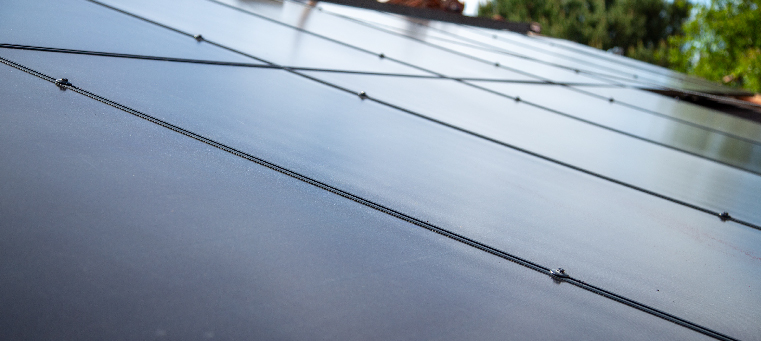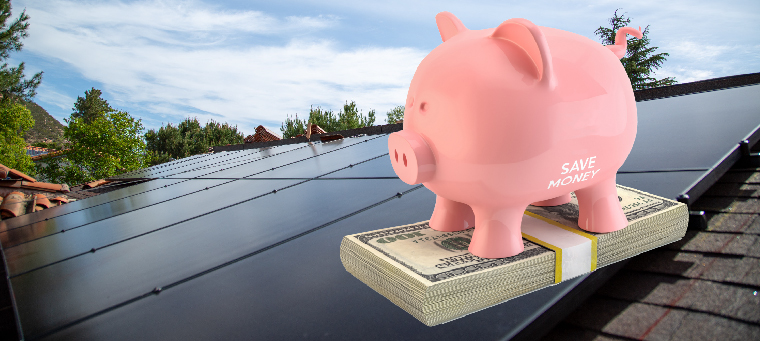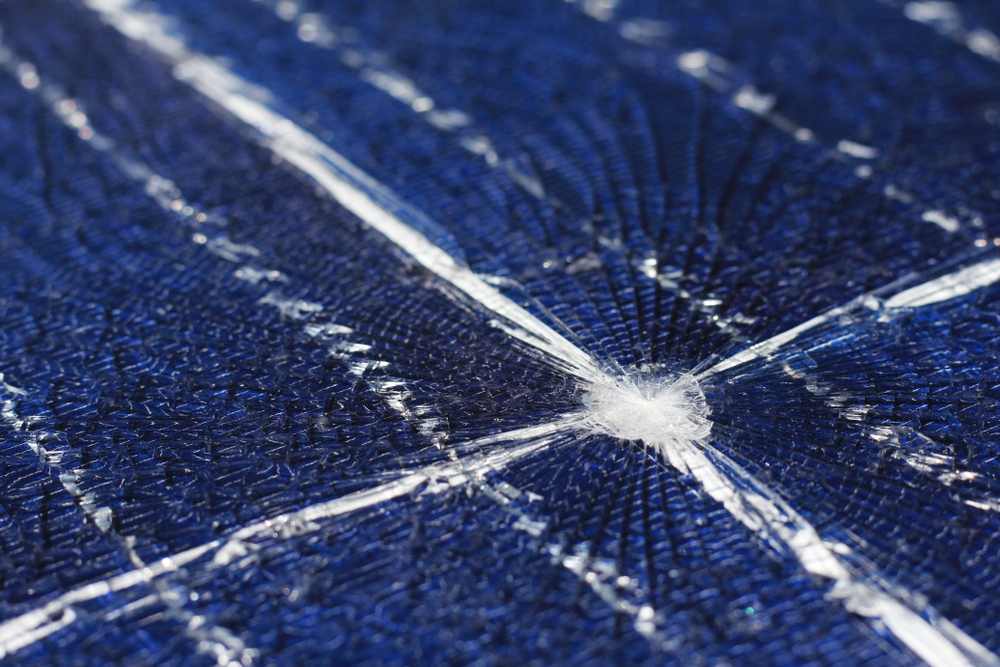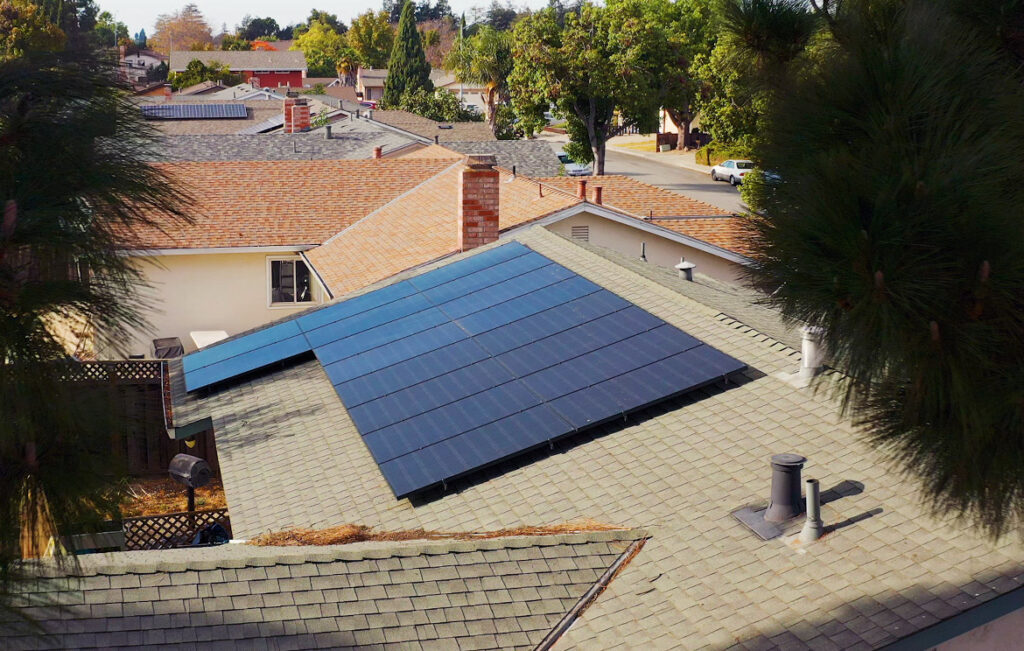




Have you ever heard the phrase, “You need to spend money to make money.”? That’s all well and good… as long as you have the money to spend! Take solar panels for your home as an example. Solar panels can help you dramatically lower or even eliminate your monthly energy bills, but what if you can’t afford the hefty price tag? Then it’s time to consider a solar lease. This financing option is extremely popular with homeowners throughout California because a solar lease offers you a viable way to get solar panels with little or even no money down. In this article, we’ll take a look at solar leases work and answer all of your burning solar lease questions.
Many of us don’t have thousands or tens of thousands of dollars sitting in our savings account that we can spend on a new solar power system. Likewise, you may be wary of taking on a solar loan to pay for your system or refinancing your house to scrounge up the money. A solar lease can be an excellent way still obtain solar panels without handing over your life’s savings.
A solar lease is a financing option that lets you essentially “rent” your solar panels from a solar leasing company for a set cost each month. (A car lease works essentially the same way.) The solar leasing company owns the panels and all the equipment and shoulders the full cost of installing, maintaining, and monitoring your system.
A solar lease is an ideal choice if you don’t want to pay out-of-pocket for your solar panels. It’s also an excellent way for you to support renewable energy production and lower your carbon footprint.
Every solar lease company offers different lease terms, but most provide zero-down payment options, meaning that you can lease your solar panel system without an upfront payment. Certain solar leases do require a small down payment, so make sure you review the terms of your solar lease carefully before signing the agreement.
The actual monthly cost of your solar system will depend on a variety of factors, including the size of your solar system, the type of solar panels that make up the system, and labor costs in your geographic area.

That’s the idea! Your solar lease provider will charge you a set rate each month based upon an estimate on how much energy your solar panel system will generate. Typically, solar lease clients enjoy a savings of between 10% and 30% each month on their energy costs.
The beauty of a solar lease is that your savings are likely to increase over time. As the utility companies continue to raise their rates, you’ll save more and more compared to your neighbors who don’t have solar panels.
Your solar lease will be active for a set amount of time as defined in your solar lease agreement. Typically, these agreements last between 20 and 25 years. Again, a solar lease allows you to pay the same set rate each month for all the energy your system produces. Over 25 years, utility costs are almost guaranteed to rise significantly, leading to even bigger cost savings for you!

One of the things that make solar leases so convenient is that the solar leasing company owns your solar panel system and is responsible for continually maintaining and monitoring the system. In the rare instance that your solar panels break, or their performance drops, your solar leasing company will come out and fix the issue. You won’t have to pay out-of-pocket to replace your solar panels or to hire a repair team.
Ideally, if you are working with an experienced and high-quality solar panel company, your solar installer will accurately assess your home’s energy usage and recommend a system that covers your energy needs. That being said, your energy usage will fluctuate from month-to-month. For example, when the sizzling summer months roll around, you’ll probably want to switch on your energy-guzzling air conditioning.
Your solar lease payment only covers the energy your solar panels produce. If you use more energy than your system generates, you’ll need to get the rest of your energy from your public utility provider and will be charged their rates. This is an important factor to understand and to consider as you plan your solar lease system.
Energy usage changes over time in most households. For example, if you purchase an electric car in the future, your energy needs could quickly outpace what your panels produce. The same is true if your kids come back from college or a parent moves into your home.
On the flip side, if your kids will be heading out on their own in a few years, you may want to consider leasing a system that is a little smaller than your current, kid-juiced energy usage rates would indicate.
As you research solar leases, you may come across the term “Power Purchase Agreement” (PPA) or see solar leases and PPAs used interchangeably. PPAs are very similar to solar leases, but they operate in a slightly different way. With a solar lease, you “rent” your solar panel system and all the power it generates for a set monthly fee.
With a power purchase agreement, you pay a set fee for every kWh (kilowatt hour) the system produces. Your monthly payment will vary depending on how much energy your system creates. For example, in winter, you may pay less, since longer nights mean less sunlight your system can convert into energy. In summer, your PPA payment will be higher as your panels drink in all that extra sunlight.
Depending on where you live, homeowners in your area who invest in solar panels may qualify for local rebates or other tax incentives. One of the biggest incentives is the federal tax deduction, which allows you to deduct 26% of the cost of your solar panel system from your tax bill.
Unfortunately, all of these incentives go to the owner of the solar panel system. If you choose a solar lease, these incentives will go to the solar leasing company, not to you. Remember though, that the solar leasing company is paying for the panels, the equipment, and the installation. Renewable energy incentives allow them to offer you low lease rates and no-money-down financing options.
Most solar leases will allow you to purchase your solar panel system during the lease period or when the lease expires. You may have to pay a predefined price as laid out in the lease agreement or the fair market value of the system (usually whichever amount is higher). Purchasing your solar panel system may be a good idea if your income increases over time and you would rather eliminate your energy costs altogether rather than pay the set lease rate each month.
As you’ve learned in this article, a solar lease typically lasts between 20 and 25 years. That’s a long time. Considering that the average American stays in their home for 13 years, chances are more likely than not that you’ll move out of your house before your lease expires.
In this situation, you have two options. You can choose to purchase the solar panel system outright and include it in the price of your home. The second option is to transfer the remainder of the lease to the new homeowners. Your solar leasing company has handled this issue plenty of times and can work with you and the new homeowner to transfer the lease.
Unfortunately, if the home buyer does not want to take on the lease, you may face a steep financial penalty if you need to break your lease. In this situation, it may be a better idea to simply purchase the system and include it in the sales price of your home.
Maybe you are currently living in your dream home and plan to stick it out into your golden years. In this case, you may wonder what happens when your solar lease comes to an end. At that point, you’ll have a few options on how to deal with the solar panels on your roof. You could simply choose to renew your lease, though your terms and payment rate may change.
If you’re done with leasing, you can decline to renew the lease, and the leasing company will come out and remove your solar panel system. Your final option is to purchase the system. It is worth speaking with a solar installation company to determine if purchasing your current system is a good idea. Solar technology continues to improve at a rapid pace even as prices continue to drop. In 20 years, it may actually be a better deal to purchase a brand new solar panel system!

It’s important to carefully weigh the benefits and the drawbacks of solar leasing before you make a final decision. Leasing is the most cost-effective option in the short term. You can get solar panels on your roof with little or no money down and begin saving on your monthly energy bills immediately. Solar leasing is also convenient. You don’t have to worry about installation, maintaining the system, or monitoring it. You’ll also get one reliable lease bill each month for the duration of your agreement.
However, if you want the most savings over time, it’s probably a better idea to purchase solar panels for your home. You’ll have to pay a big chunk of money out of pocket, but your system will significantly lower or even entirely eliminate your monthly energy bill. You’ll also get to take advantage of the federal tax deduction and any local tax incentives and rebates available, which can help lower the overall cost of your system.
Most studies find that solar panel systems in California will pay for themselves in six to seven years. After that point, your solar panels will be keeping money in your pocket while you protect the environment.
Not sure whether to purchase your solar panels or go with a solar lease? Talk to a local solar installation company to learn more about the pros and cons of each option. At Semper Solaris, you can contact us today to schedule a free energy analysis, and we’ll send a trained solar representative to your home to walk you through your financing options.